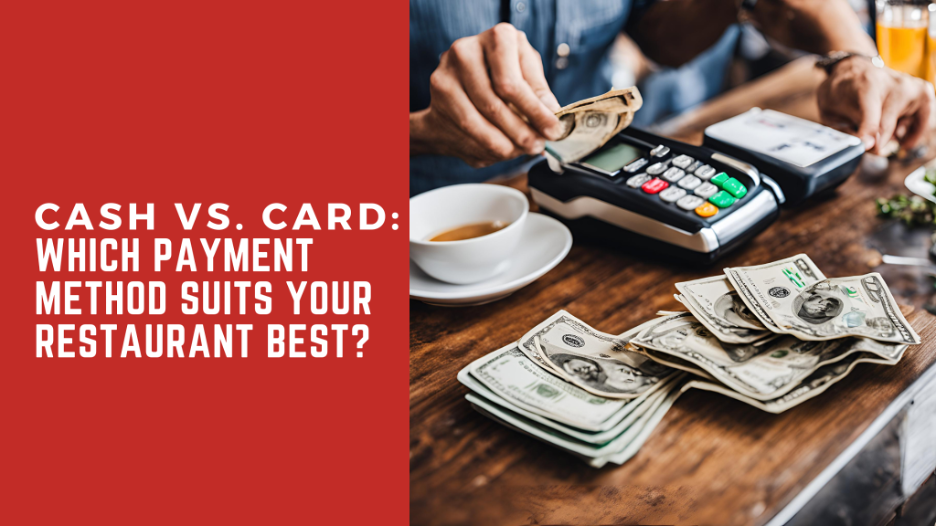Cash vs. Card Payments: What’s Best for Your Restaurant?
As a restaurant owner, choosing the right payment method can significantly impact customer satisfaction and operational efficiency. With payment options evolving, it’s essential to evaluate the benefits and drawbacks of cash and card payments. Here’s a breakdown to help you decide what works best for your establishment.
The Case for Cash Payments
Pros:
- Instant Availability: Cash is immediately accessible, meaning you don’t have to wait for transaction clearance or deal with bank processing times. This can help with daily operations, like buying ingredients or handling small expenses on the fly.
- No Processing Fees: Unlike card payments, which incur transaction fees (usually between 2-4% per transaction), cash doesn’t carry any associated costs. This means more of your revenue stays with your business.
- Simpler for Small Purchases: For small or low-cost items, cash transactions can be faster and more convenient. Some customers prefer paying in cash to avoid swiping their card for minor purchases.
Cons:
- Security Risks: Handling large amounts of cash increases the risk of theft, both from external sources and internal employee mishandling. Managing and safeguarding cash requires careful attention, often adding an extra layer of concern for business owners.
- Time-Consuming Cash Handling: Counting, reconciling, and depositing cash can be labor-intensive, especially during peak hours. There’s also a margin for error in manual calculations.
- Limited Customer Preference: Many customers today prefer the convenience of cards and digital payments, particularly with the rise of contactless transactions. If your restaurant is cash-only, you might deter potential diners who prefer using cards.
The Case for Card Payments
Pros:
- Customer Convenience: Most customers today carry debit or credit cards and expect card payments as an option. Accepting cards broadens your customer base, making it easier for those who rarely carry cash to dine at your establishment.
- Increased Spending: Studies show that people tend to spend more when using cards compared to cash. This is especially true for higher-ticket items like meals at restaurants, where customers might feel less constrained by the physical cash they have on hand.
- Digital Payment Integration: Card payments often come with additional perks, such as integration with loyalty programs, mobile payments, or tracking tools that can help you monitor sales more easily. In a world moving toward digital, this can help streamline your business processes.
Cons:
- Transaction Fees: One of the biggest drawbacks of accepting card payments is the processing fee associated with each transaction. These fees can add up, especially in high-volume restaurants, cutting into your profit margins.
- Technical Issues: Relying on card readers or payment systems means you’re dependent on technology working perfectly. A malfunctioning card reader or an internet outage can lead to frustration for both you and your customers.
- Delayed Funds Access: Unlike cash, card payments typically take time to process, with funds often taking a couple of business days to arrive in your account. This may impact cash flow, particularly if you rely on immediate access to funds.
What’s the Best Option for Your Restaurant?
Ultimately, the best payment method for your restaurant depends on your specific needs and the preferences of your customers. Most businesses today find that offering both cash and card options strikes the perfect balance, catering to a wider range of patrons.
Here are some questions to consider when deciding:
- What’s the size of my average transaction? If your average ticket is high, accepting cards may be more advantageous as customers are more likely to use them for larger purchases.
- Who are my typical customers? Younger, tech-savvy patrons may prefer card or mobile payments, while an older clientele might be more comfortable using cash.
- Can I absorb transaction fees? If your profit margins are slim, the processing fees associated with card payments could make a significant impact. Some restaurants offset these fees by including a surcharge for card payments.
- What are my security concerns? If theft or mismanagement of cash is a concern, relying more on card payments can reduce those risks.
The Best of Both Worlds: Flexibility is Key
At the end of the day, offering both payment methods—cash and card—gives your customers flexibility, which is often the most important factor. By catering to different preferences, you increase the likelihood of repeat business and customer satisfaction. Just make sure that your point-of-sale (POS) system is equipped to handle both payment types efficiently. At KwickPOS we have that solution for you.
As technology advances, don’t forget to stay open to newer payment options such as mobile wallets (Apple Pay, Google Pay) and contactless payments, which are becoming increasingly popular.
Whether it’s cash or card, the goal is to make payment as seamless and convenient as possible for your customers while keeping your business’s operational needs in mind.
Conclusion: There’s no one-size-fits-all answer, but a balanced approach that combines both cash and card options tends to be the best solution for most restaurants. By offering multiple payment methods, you ensure you’re ready to serve all types of customers—maximizing convenience and profits along the way.
KwickPOS Will Boost Your Profits With Better Management and Higher Efficiency!
Feel hassle with purchasing? Call us today at 1(888) 355-6996 to get more information!

